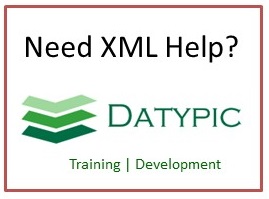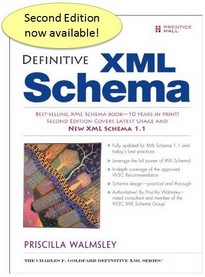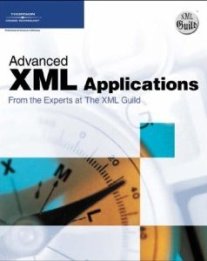subpart
A hierarchical structure of a measure, typically the major subdivision of a part (structure of legislation).
The formatting of a subpart (structure of legislation) will be according to the rules of the style (such as OLC style or United States Code Style) in effect. The style will control such display issues as the fonts and highlighting used, the margins, and the indentation levels. The style will also control generation of text, for example, the word “Subpart” before the enumerator and any punctuation or spacing surrounding or following the enumerator.
Any necessary casing, punctuation, and spacing following the header will also be generated for display or printing. For example, when a subpart (structure of legislation) follows OLC style, the display or print system will generate an uppercased, centered header with no punctuation following.
Element information
Namespace: None
Schema document: C:/aaprojects/schemacentral/inputs/gpo-amend/amend.xsd
Type: Anonymous
Properties: Global, Qualified
Content
- Sequence [1..1]
- enum [0..1]The enumerator associated with a subdivision or level (e.g., 1. for sections, (a) for subsections). Note: When an enumerator appears as two enumerator (e.g., (a)(2)), the structure is produced with two levels where the second level has an attribute of display-inline="yes-display-inline"
- header [0..1]The header is the structure, often proceeded by an enum element that represents the "bold" text or heading of a subdivision or level. For example: the words “Short Title” in the phrase “Section 1. Short Title.” The text of headers is typed in sentence style casing (upper and lower case) so that the table of contents entries can be extracted from the body of the document. Display mechanisms (both print and on-line) will need to transform the casing of headers based on their legislative structure. Section headers display uppercased. Subsection headers display in a caps and small caps casing style where the first letter of the header is always uppercased; characters originally typed using uppercasing are caps and all other words are initial capped, except for the following words: a, an, and, as, at, but, by, for, in, of, on, or, the, and to. Levels below the subsection level are cased using caps and small caps, but maintain sentence style casing. For all other structural levels (e.g., division, title, subtitle, part, subpart, etc.), the casing is transformed to uppercase. In addition, any necessary punctuation and spaces following the header will be generated for display or printing. For example, when certain structures, e.g., Titles, Subtitles, Chapters, etc., follow OLC style, the display or print system will generate a centered header with no subsequent punctuation. For sections using OLC style, a generated period will follow the header, and for structures below the section level, a generated period followed by an em-dash will follow the header.
- toc [0..1]The table of contents for a measure or portion of a measure. The attributes of the toc element are used for regeneration of the toc within the authoring environment. There are essentially two toc sub-models (toc-entries or multi-column-toc-entries). Both models are non-hierarchial in that the legislative structure is defined in an attribute rather in the structure of the toc itself. The toc-entries sub-model, the most common, is sequence of enumerators and headers from the measure's source using PCDATA. There is no distrinction between the enumerator and header elements within the toc-entry elements. The multi-column-toc-entries sub-model contain up to three columns of data per entry (toc-enum, level-header, and target or page-num). Both sub-models also support quoted-entry elements (ie.g., toc-quoted-entry and multi-column-toc-quoted-entry respectively).
- Choice [0..*]
- appropriations-major
- appropriations-intermediate
- appropriations-small
- sectionA hierarchical structure of a measure. This is usually the top level contained with the legislative body. Levels contained within sections are subsections, paragraphs, subparagraphs, clauses, subclauses, items, and subitems. Sections are normally enumerated with a numeric value followed by a period (e.g., 1.). The formatting of a section (structure of legislation) will be according to the rules of the style (such as OLC style or United States Code Style) in effect. The style will control such display issues as the fonts and highlighting used, the margins, and the indentation levels. The style (and the numerical order of the section (structure of legislation) within its containing structure) will also control generation of text, for example, the word “Section”, “Sec.”, or “§” before the enumerator and any punctuation or spacing surrounding or following the enumerator. In so doing, the style will ensure that a period always follows the abbreviation “Sec”, but not the word “Section”, and that the appropriate punctuation follows the enumerator. Accordingly, such punctuation will not be keyed and will not be part of the data. Any necessary punctuation and spaces following the header will also be generated for display or printing. For example, when a section (structure of legislation) follows OLC style, a generated period will follow the header.
- chapter [0..*]A hierarchical structure of a measure. The formatting of a chapter (structure of legislation) will be according to the rules of the style (such as OLC style or United States Code Style) in effect. The style will control such display issues as the fonts and highlighting used, the margins, and the indentation levels. The style will also control generation of text, for example, the word “Chapter ” before the enumerator and any punctuation or spacing surrounding or following the enumerator. For example, a chapter (structure of legislation) in OLC style will have a generated em-dash following the Enumerator. Accordingly, such punctuation will not be keyed and will not be part of the data. Any necessary punctuation and spaces following the header will also be generated for display or printing. For example, when a chapter (structure of legislation) follows OLC style, the display or print system will generate a centered header with no punctuation following.
from type subpart-modelfrom group start-of-structure
Attributes
| Name | Occ | Type | Description | Notes |
|---|---|---|---|---|
| style | [0..1] | style-attribute-values | Identifier for the style of format to be used for a measure, e.g., Office of Legislative Counsel style, Tax style, “Traditional” style, etc..The style will determine the fonts, margins, indent levels, punctuation to be used with enumerators, and other display and typographic variables. Thus, a title (structure of legislation) or section (structure of legislation) set in two different styles could look very different on screen or paper, even though the structures are the same. This attribute can be used to create the same effect that used to be created using GPO’s subformat facility. | |
| section-style | [0..1] | Anonymous | ||
| id | [1..1] | xsd:ID | Unique name for the element so that it can be referenced.Provides the name of a particular element, so it can be distinguished from all other elements of the same type, for example, naming one particular section (structure of legislation) so that applications can point to it and distinguish between it and the other perhaps hundreds of other sections (structure of legislation) in the same document. | from group unique-id |
| changed | [0..1] | Anonymous | Has this ENTIRE structural element (such as a Section (structure of legislation), Title (structure of legislation), etc.) been added or deleted?Note: Use the <added-phrase> and <deleted-phrase> elements for changes inside a structure that are less than the full structure.This attribute is used to mark entire structures that should be made typographically distinct because they have been added to or deleted from a measure. In contrast, the added phrase <added-phrase> and deleted phrase <deleted-phrase> elements are used to indicate changes within a structure that are less than the full structure, sometimes as little as a word, a number, or a few letters.A structure (such as a title or a section) that has been marked as changed using this attribute is usually presented in a different typographic style to indicate the change. Material that has been inserted (added) is typically in italics. Material that has been removed (deleted) is typically struck through. | from group structure-attributes |
| committee-id | [0..1] | xsd:anySimpleType | The id of a working subdivision of a chamber, which prepares legislation or conducts investigations | from group structure-attributes |
| reported-display-style | [0..1] | Anonymous | from group structure-attributes | |
| indent | [0..1] | Anonymous | Mechanism permitting an override of the indentation typically used or a way to specify indentation level for a structure. The values are relative (up1 through up7 and down1 through down7) and absolute (the structure level can be specified such as subsection). | from group structure-attributes |
| commented | [0..1] | Anonymous | Default value is "no". from group structure-attributes | |
| level-type | [0..1] | Anonymous | Default value is "subsequent". |
Used in
- Anonymous type of element rule
- Anonymous type of element rules-clause
- Anonymous type of element rules-paragraph
- Anonymous type of element rules-subparagraph
- Anonymous type of element rules-subdivision
- Anonymous type of element rules-item
- Anonymous type of element rules-subitem
- Anonymous type of element amendment-block
- Anonymous type of element part via extension of part-model
- Anonymous type of element quoted-block via extension of quoted-block-model
- Type part-model
- Type quoted-block-model


